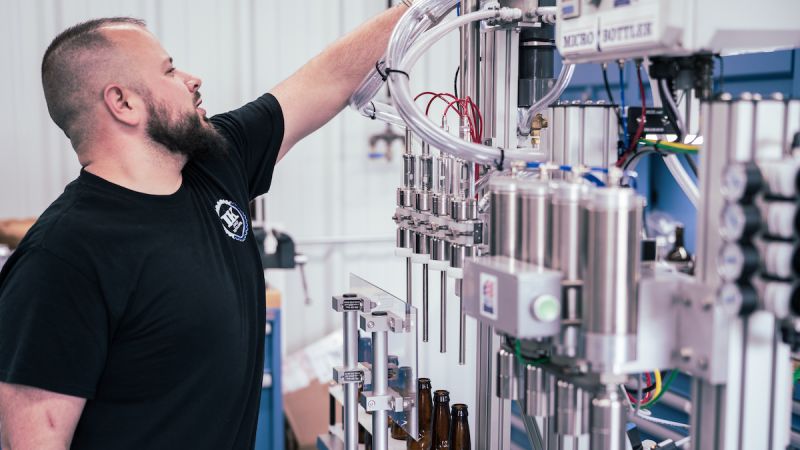If you have been searching for a bottling/canning solution, you have undoubtedly been learning all sorts of new terms and trying to sort out machine features that have you a little confused. One of these new concepts you are trying to get your head around is probably “Counterpressure” and Counterpressure (also known as isobaric) type filling.
Counterpressure filling is the most reliable way to fill any vessel with carbonated liquid. While some carbonation levels can be filled at atmospheric pressure if they are kept cold enough during the process, counterpressure filling can reliably handle a wider range of carb levels and temperatures. I have even heard stories of people buying an atmospheric filling machine, only to be told they must change their products carbonation level to use it. Why would you buy a packaging line that asks that of you?
I think to understand counterpressure filling, you must first understand what carbonation is on a very basic level. To keep it simple for the purpose of packaging, carbonation is a bunch of tiny bubbles that are just waiting for you to make a mistake that releases them from your liquid.
Common mistakes are to agitate it, warm it or expose it to a sudden drop in pressure. These little bubbles are happy living inside your liquid until you make one of these mistakes, which sends them racing for the surface with thousands of their little friends following in tow. Shake a warm can of beer, then pop it open quickly and you are creating the perfect storm of all three mistakes. Once these snappy little bubbles have escaped you are left with a flat drink.
The bubbles will present themselves differently in different fluids. Consider the bubbles in a glass of champaign compared to a stout style beer. There is myriad chemistry, thermodynamic and physics interactions at play here determining the characteristics of the bubbles and these differences in bubble shape, size and density all determine how hard a beverage will be to package. To keep the bubbles inside the liquid, you simply must avoid the mistakes.
Counterpressure filling is simply filling a container that is pressurized. By pushing a carbonated liquid into a container that is already under pressure, you keep those bubbles from racing to freedom due to the agitation action of filling the container. Once the container is full and there is no longer agitation happening, the pressure can be released. Think of the pressure in the bottle as “holding in” the carbonation while the liquid is swirling all around during the fill.
You also want to keep everything (your liquid, the keg or tank, the tubing and all the parts of the machine) as cold as possible, because we know heat is a sure way to release the beast, but it is paramount that you fill under pressure if you want to have universal success filling carbonated liquids. A well adjusted counterpressure filler will lower the pressure of the liquid in steps, first you will lower your keg or tank pressure as low as it can be while still preventing bubbles from escaping.
Next you will use only enough counterpressure to keep foaming under control while filling (you need a small bit of foam to ensure the bottle caps or can ends are sitting on foam for good D.O. numbers). Lastly, if necessary, you can allow the containers pressure to normalize further before finally releasing all pressure.
